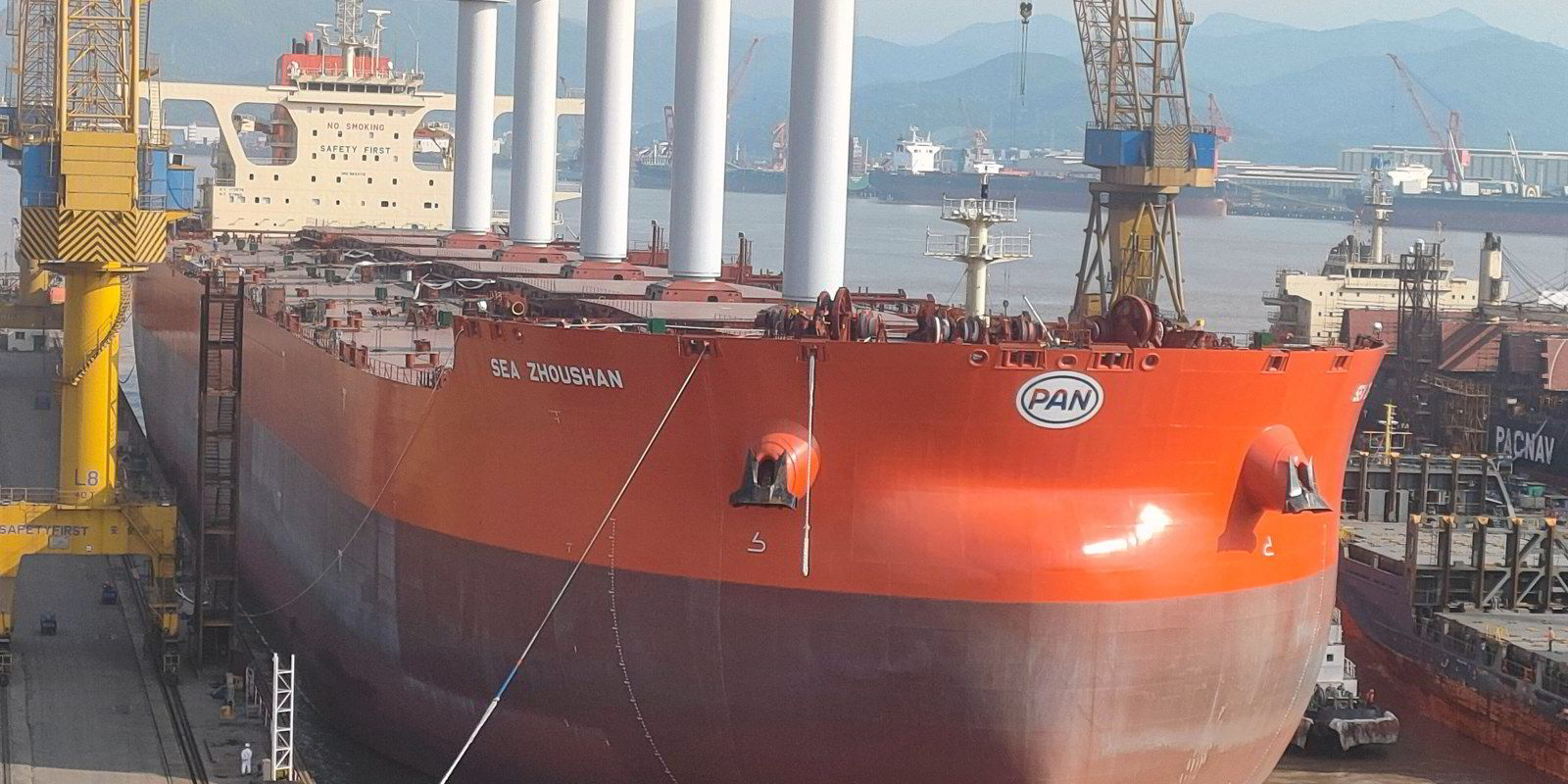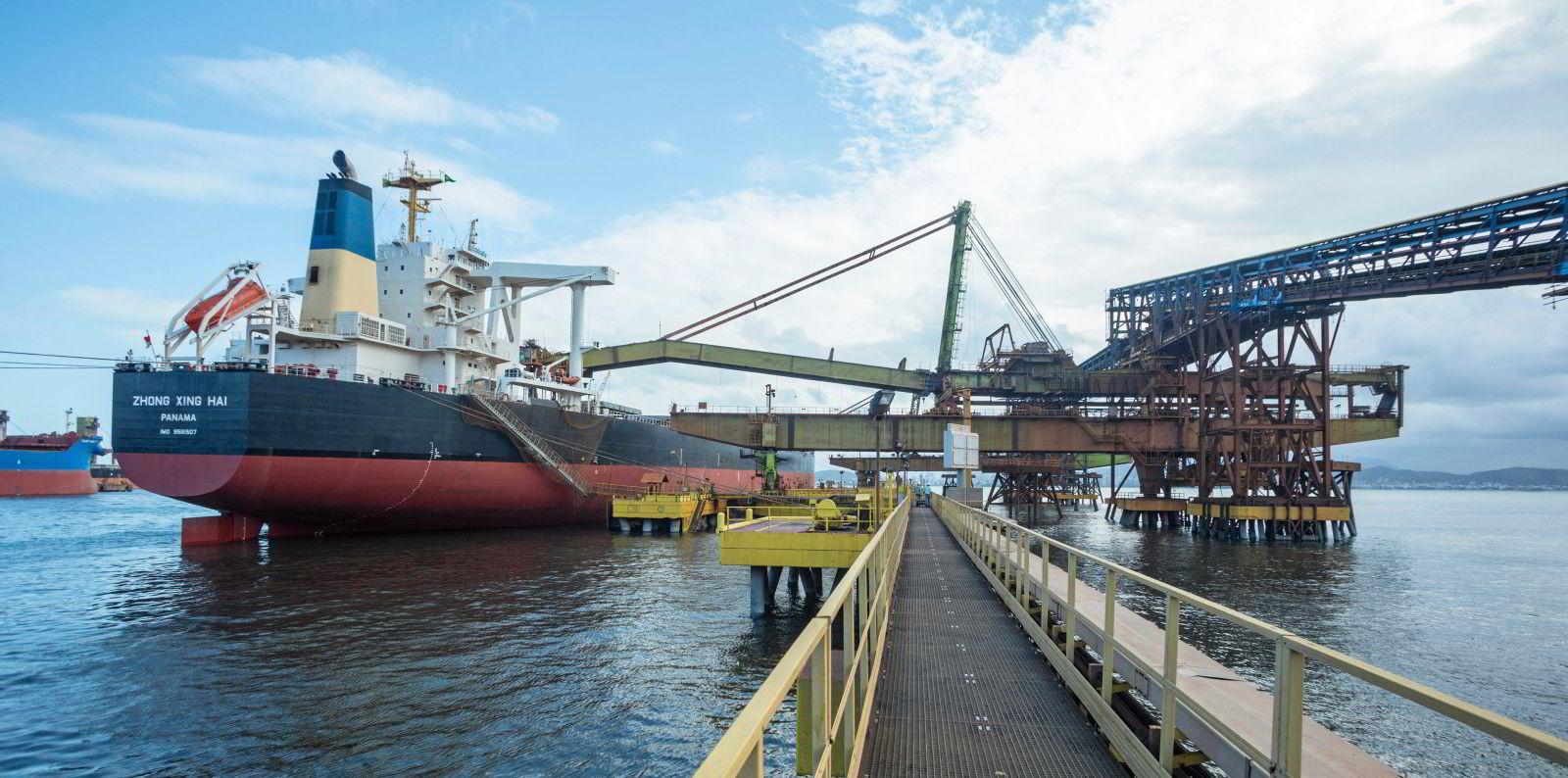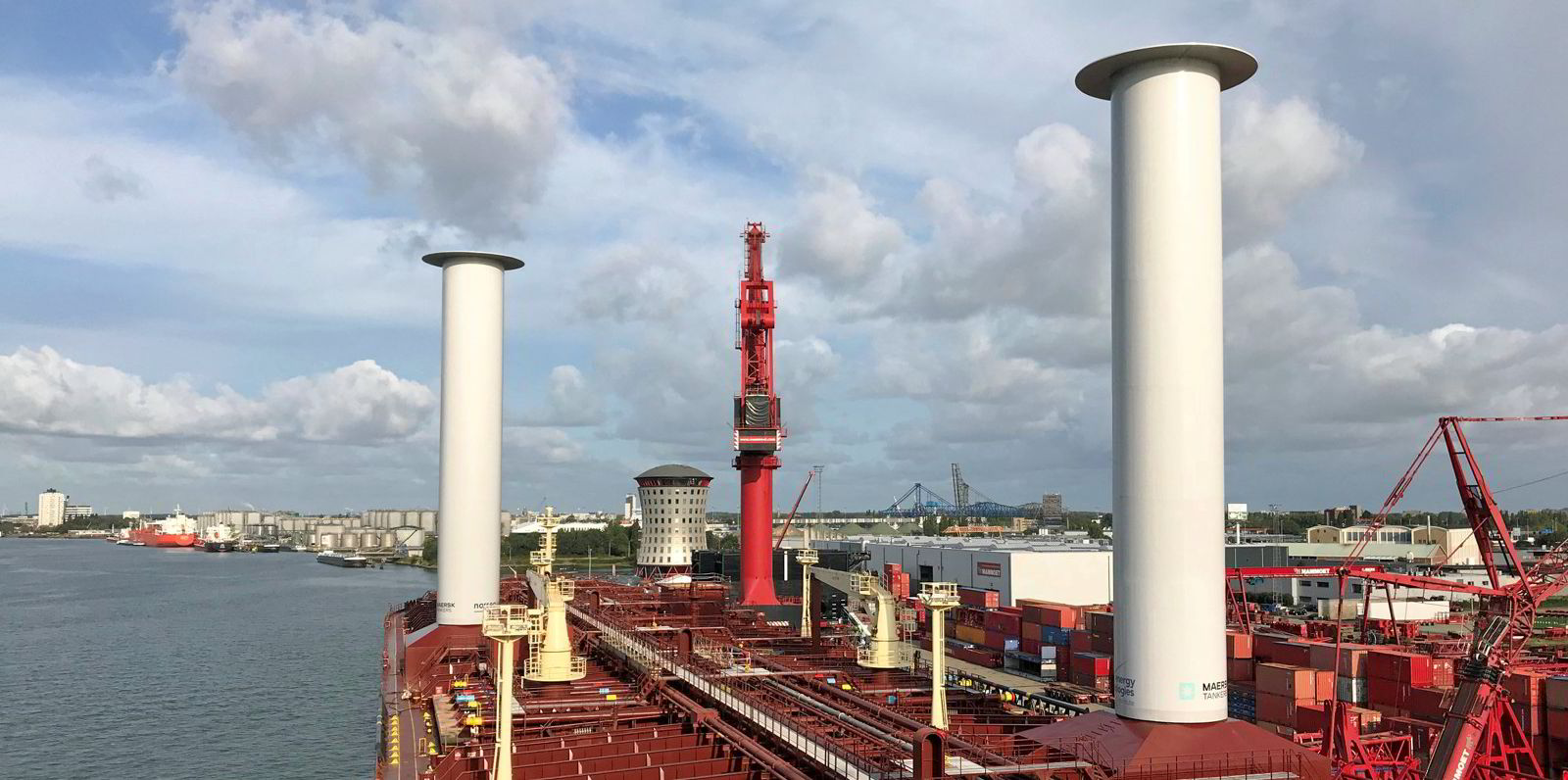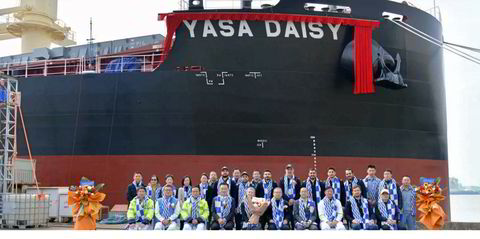Brazilian mining giant Vale has been revealed as the first bulker owner and charterer to fit Norsepower wind rotor sails on a VLOC newbuilding.
Five 24 metre-high tilting rotors have been installed on the Pan Ocean-owned, 325,000-dwt guaibamax vessel Sea Zhoushan.
They are targeted to cut fuel consumption and emissions by up to 8% on routes between Brazil and China, amounting to a saving of 3,400 tonnes of CO2 per year.
Norsepower chief executive Tuomas Riski said the installation was by far the biggest it has made on any ship, with previous projects having involved a Maersk Tankers' 110,000-dwt product carrier and ferries mainly operating in Europe.
Riski told TradeWinds that a typical ship installation costs from €1m to €4m ($4.8m)depending on the size of the project. He added that the Vale project on the China-built Guaibamax cost several million euros.
TradeWinds estimates the emissions reduction equates to annual fuel savings of between $500,000 and $1m.
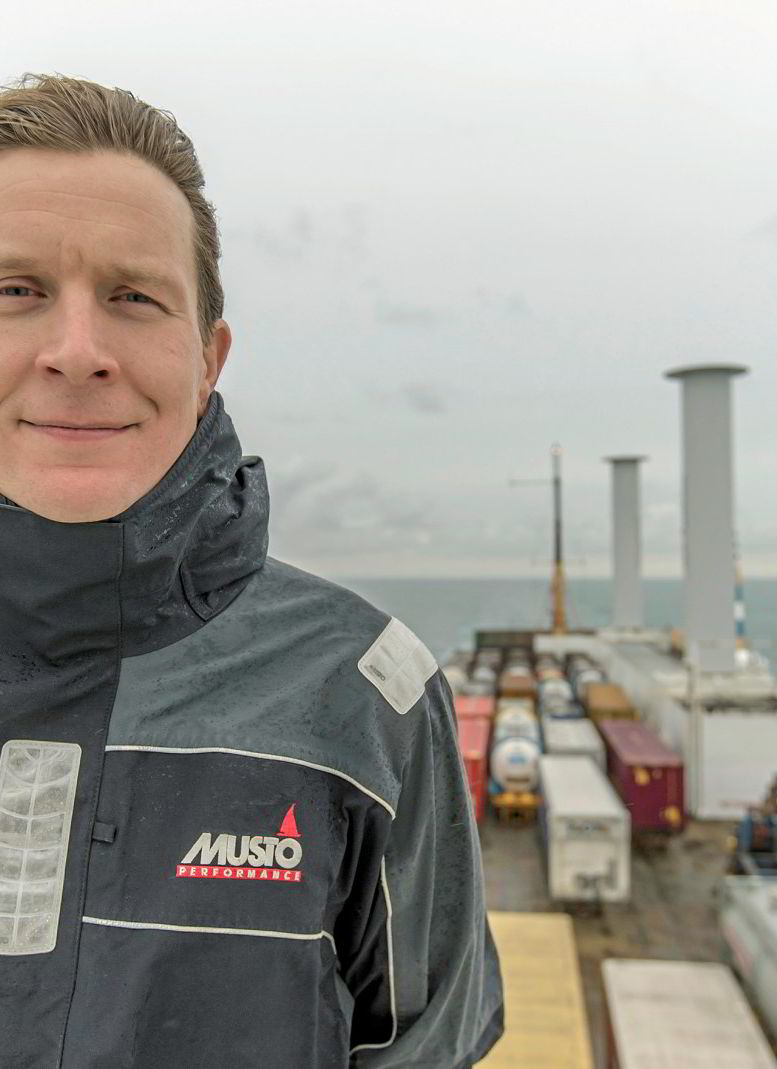
The vessel was built at China's New Times Shipbuilding in Jingjiang, which made adaptations for the ship to take the sails. They were fitted at PaxOcean Engineering Zhoushan.
Shanghai Merchant Ship Design & Research Institute was responsible for the vessel's design and sail integration.
Vale will monitor the performance of the bulker, and the company will be looking at adding more rotors to other vessels if the results are as good as the feasibility studies forecast.
"If the pilot proves effective, it is estimated that at least 40% of the fleet will be able to use the technology, which would result in a reduction of almost 1.5% of Vale's annual iron ore maritime transport emissions,” Vale shipping technical manager Rodrigo Bermelho said.
The rotors fitted to the Vale ship are its medium height units, chosen to ensure a smooth installation, but Riski said he saw no reason why its larger 35-metre sails could not be fitted.
The rotor units have been designed to tilt to avoid hatches and cause no interference to cargo-loading operations.
Early this year, two of Norsepower’s 35-metre rotors were installed on Sea-Cargo’s 8,843-dwt ro-ro SC Connector (built 1997), which operates in favourable North Sea wind conditions. They were shown to have generated a maximum thrust force equivalent of 7 MW of propeller shaft power.
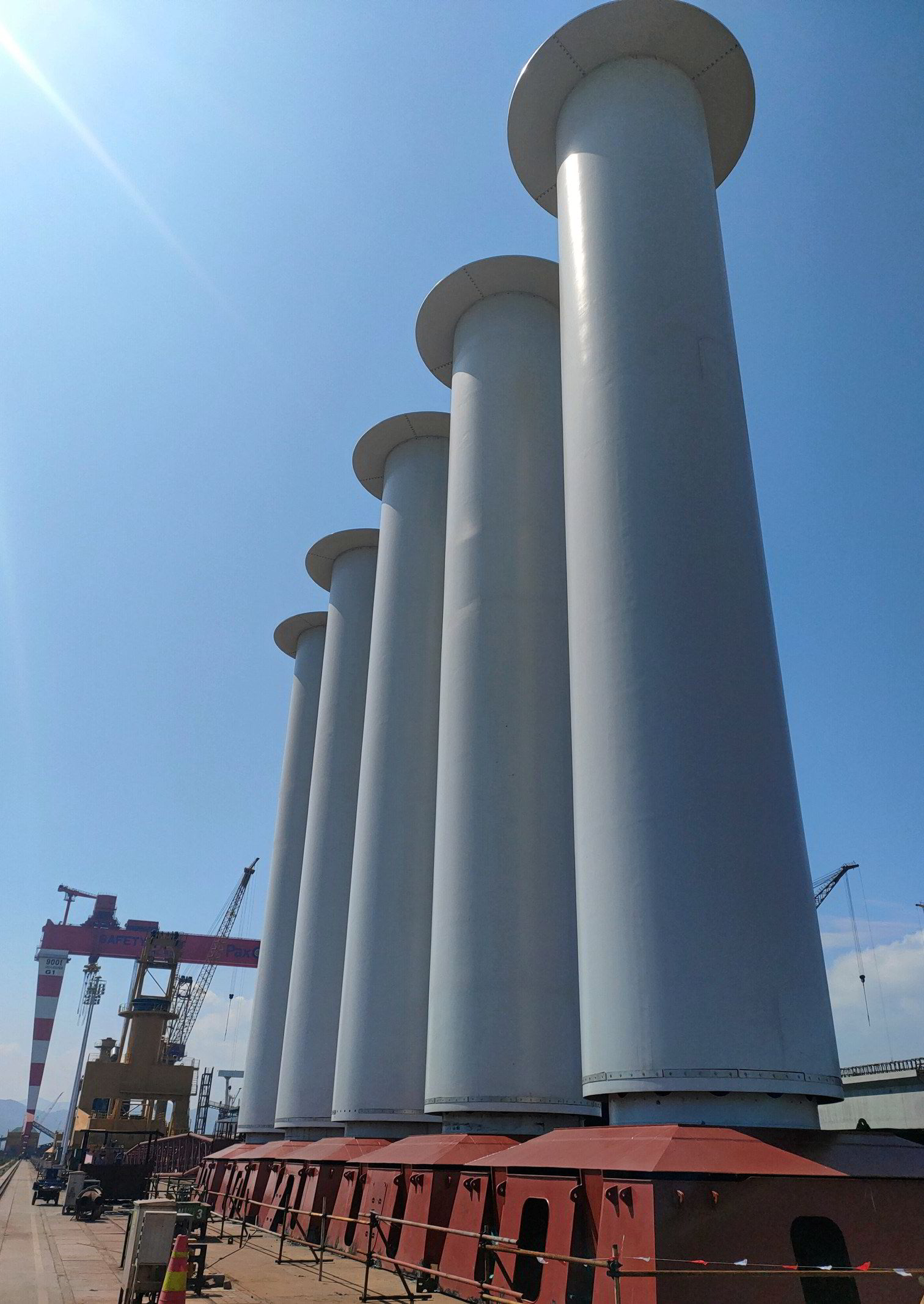
Wind-assisted propulsion is increasingly being seen as a means to help reduce emissions for owners looking to meet the Energy Efficiency Existing Ship Index (EEXI) and the Carbon Intensity Indicator regulations set by the International Maritime Organization to improve fuel efficiency and environmental performance.
“Our sales pipeline is growing at a fast rate,” Riski said of the new standards. “I expect quite fast market take-up of this major and emerging technology.”
Trading giant Cargill is putting two of BAR Technologies WindWings' rigid sails on a kamsarmax bulker that will be in operation by early 2022. The rigid sails promise savings of up to 30%.
Norsepower’s rotor sails are a modernised version of the Flettner rotor system that uses the Magnus effect of a spinning cylinder to harness wind power and provide thrust. Their savings are expected to be in the 5% to 20% range.
In April, Norsepower signed a framework deal with Keppel Offshore & Marine’s technology arm — Offshore Technology Development — for it to assist in providing initial survey, design and engineering works for its rotor sails as well as organising equipment installation.
Under the agreement, Norsepower will deliver project management, delivery and installation supervision plus servicing and warranty support of the sails.
